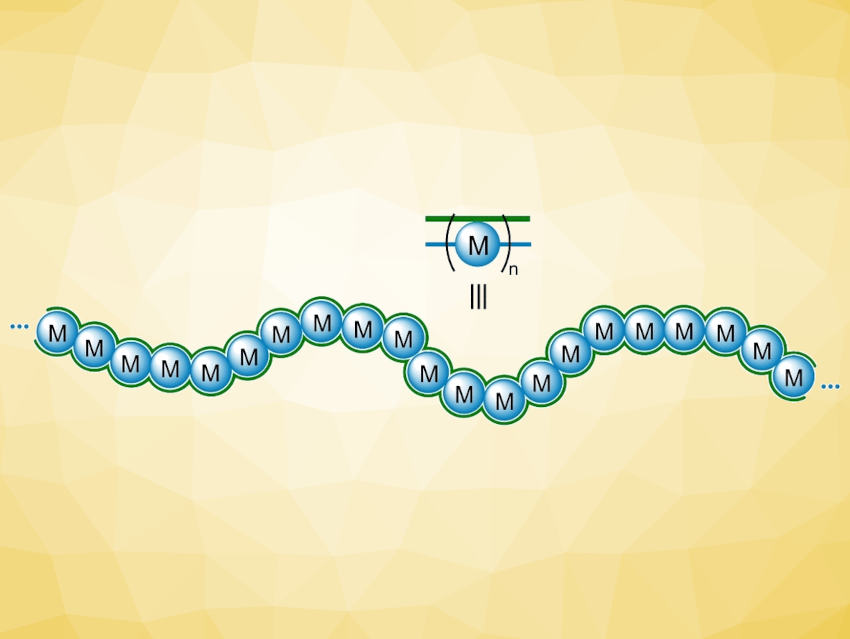Until now, it has been clear: You can have a metal or a plastic, but not both in one. However, things do not have to stay that way. Guowei Wang, Huisheng Peng, Fudan University, Shanghai, China, and colleagues have developed a polymer with a metallic backbone that is conductive, thermally stable, and has interesting optoelectronic properties.
New Functional Polymeric Materials
Because of the different electronic structures of metal and nonmetal atoms, it is difficult to confer the properties of metals, such as high thermal and electrical conductivity, upon polymers. Polymers with a metal backbone could combine the advantages of both types of material and open routes to materials with novel functionality.
The problem lies in the weak bonds between the metal atoms, which cannot stabilize a polymer backbone to the same extent as the nonmetal atoms of conventional polymers. The team successfully synthesized a stable polymer with a backbone made of nickel atoms.
Nickel-Backboned Polymers
The researchers used a chalice-shaped molecule (calixarene) with four binding sites as the “scaffold” for the metal polymer. They attached four poly(aminopyridine) chains to the calixarenes, which bundles the four chains and aligns them in parallel. Synthesis of the chains can be carried out in a stepwise manner from individual building blocks, or several larger blocks can be linked together. By using an iterative synthetic procedure in which protective groups and end caps are bound and then removed, the team was able to produce chains of equal length. They then carried out the metalation.
The nitrogen atoms of the chain molecules can bind nickel. Their distance from each other exactly matches the distance of metal–metal bonds, causing the nickel atoms to link together in a single line. The four poly(aminopyridine) chains wrap around the nickel chain in a helix, as shown by X-ray structure analysis, and stabilize it.
Polymers with Well-Defined Lengths
The team was, thus, able to synthesize polymers with a nickel backbone and precisely controlled length. They produced versions with three to 21 nickel atoms. Interestingly, the distance between nickel atoms decreases as the chain length increases, strengthening the Ni–Ni bonds.
The new materials may conduct electricity, are thermally stable, and can be processed in solution. They demonstrate strong length-dependent light absorption with narrow band gaps, which is promising for optoelectronic devices and semiconductors. The new synthetic strategy could also be expanded to other transition metals such as copper and cobalt.
- Metal‐Backboned Polymers with Well‐Defined Lengths,
Kaiwen Zeng, Yibei Yang, Jianing Xu, Ning Wang, Weiqiang Tang, Jianchen Xu, Yifeng Zhang, Yanruzhen Wu, Yifei Xu, Guowei Wang, Peining Chen, Bingjie Wang, Xuemei Sun, Guoxin Jin, Huisheng Peng,
Angew. Chemi. Int. Ed. 2023.
https://doi.org/10.1002/anie.202216060




